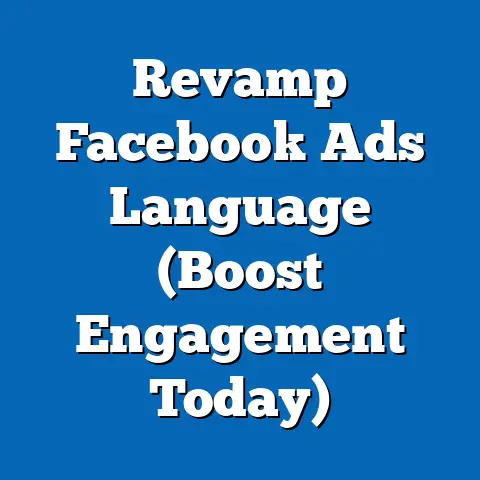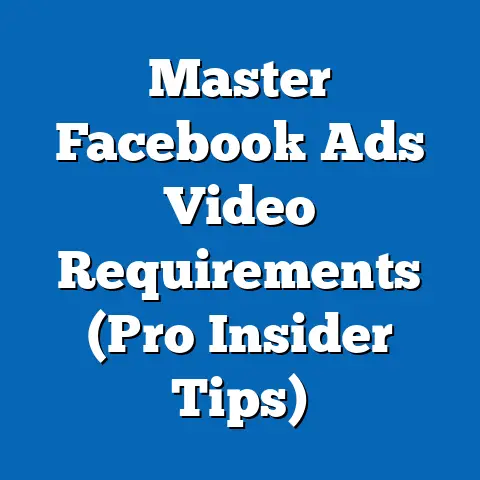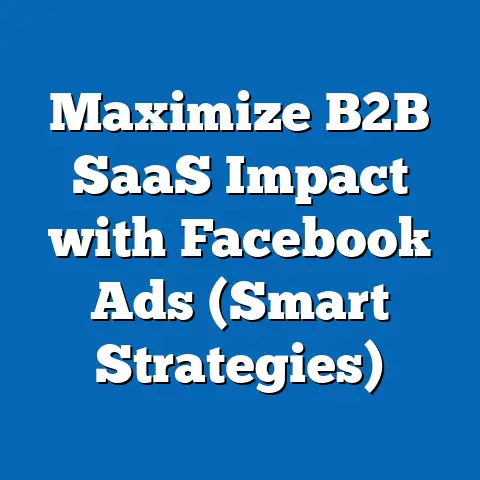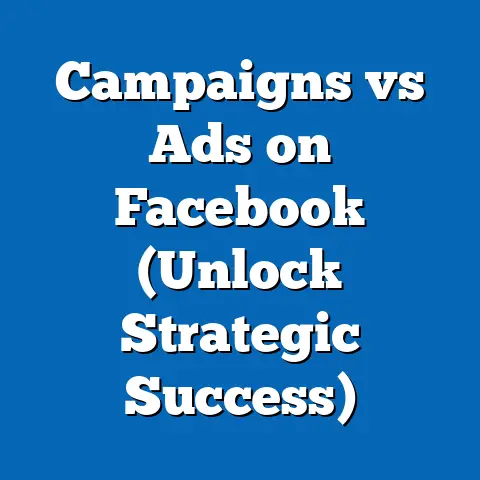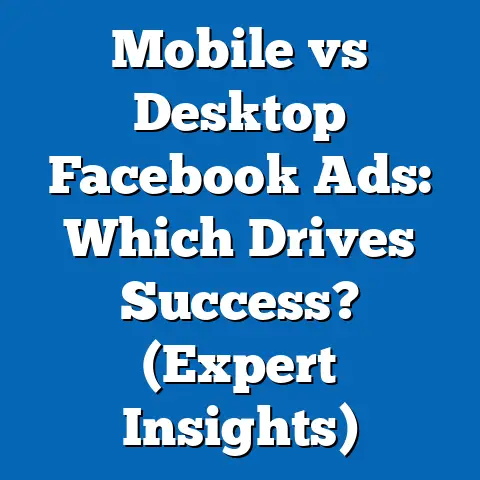Unlock Facebook Lead API Mastery (Essential Strategies)
Are you looking for the best option to supercharge your lead generation efforts? In today’s digital landscape, capturing leads directly from social media is crucial, and that’s where the Facebook Lead API shines. I’ve seen firsthand how this powerful tool can transform marketing strategies, streamlining workflows, enhancing data collection, and ultimately, improving lead quality. It’s more than just a tool; it’s a game-changer.
Understanding the Facebook Lead API
So, what exactly is the Facebook Lead API? At its core, it’s a powerful interface that allows businesses to directly capture leads from their Facebook ads and seamlessly integrate that data into their CRM or marketing automation systems. Instead of sending potential customers to a landing page, where they might drop off, the Lead API lets them submit their information directly within the Facebook platform.
Here’s how it works:
- Direct Capture: Users click on your Facebook ad, and a pre-filled form pops up within the Facebook interface.
- Seamless Integration: The data submitted is automatically sent to your chosen CRM or marketing automation tool.
- Real-Time Data: You get access to lead information in real-time, enabling immediate follow-up.
The primary purpose of the Lead API is to simplify and expedite the lead generation process. It eliminates friction, improves the user experience, and provides marketers with a wealth of valuable data.
Types of Leads You Can Capture:
With the Facebook Lead API, you’re not limited to just basic contact information. You can capture a wide array of data, including:
- Email Addresses: The most common and essential piece of lead data.
- Phone Numbers: Crucial for direct communication and sales outreach.
- Demographic Information: Age, location, gender, etc., for targeted marketing.
- Custom Data Fields: Tailored questions to gather specific insights about your target audience (e.g., “What are your biggest challenges with [industry]?”).
Why is it important?
I remember working with a client who struggled with low conversion rates on their landing pages. By implementing Facebook Lead Ads and integrating them with the Lead API, we saw a dramatic increase in lead volume. The ease of use and seamless integration eliminated the barriers that were previously hindering conversions.
Key Takeaway: The Facebook Lead API is a vital tool for modern marketers, enabling direct and efficient lead capture from Facebook ads. It allows you to gather essential data and integrate it seamlessly into your existing marketing systems.
Setting Up the Facebook Lead API
Now, let’s dive into the practical steps of setting up the Facebook Lead API. This might seem a bit technical, but I promise, I’ll break it down into manageable steps.
Step 1: Create a Facebook Developer Account
If you don’t already have one, you’ll need to create a Facebook Developer account.
- Go to developers.facebook.com.
- Click on “Get Started” and follow the prompts to create your account.
- Verify your account by providing the necessary information.
Step 2: Create a New App
Once your developer account is set up, you’ll need to create a new app.
- In the Facebook Developer portal, click on “My Apps” and then “Create App.”
- Choose an app type (usually “Business”) and provide a name for your app.
- Complete the app creation process.
Step 3: Add the Lead Ads API Product
- In your app dashboard, find the “Add Product” option.
- Select “Lead Ads API” from the list of available products.
- Follow the prompts to add the Lead Ads API to your app.
Step 4: Configure Permissions
You’ll need to request specific permissions to access lead data.
- Go to “App Review” and then “Permissions and Features.”
- Request the following permissions:
leads_retrievalmanage_pagesads_management
leads_retrievalmanage_pagesads_management
Step 5: Generate an Access Token
To connect your app to the Lead API, you’ll need an access token.
- Go to “Tools” and then “Graph API Explorer.”
- Select your app from the “Application” dropdown.
- Choose the
manage_pagesandads_managementpermissions. - Click “Generate Access Token.”
Step 6: Connect to a CRM or Marketing Automation Tool
This is where the magic happens. You’ll need to connect your app to your CRM or marketing automation tool.
- Direct Integration: Some CRMs and marketing automation platforms offer direct integration with the Facebook Lead API. Follow their specific instructions to connect your app.
- Third-Party Tools: If direct integration isn’t available, you can use third-party tools like Zapier or Integromat to connect your app to your chosen platform.
Understanding Facebook’s API Documentation:
Navigating Facebook’s API documentation can be daunting, but it’s essential for a smooth setup. Facebook provides extensive documentation and resources for developers, including:
- API Reference: Detailed information about API endpoints, parameters, and responses.
- Guides and Tutorials: Step-by-step instructions for common tasks.
- Community Forums: A place to ask questions and get help from other developers.
Why is it important?
I once spent hours troubleshooting an API integration issue, only to realize I had missed a crucial detail in the documentation. Taking the time to thoroughly understand the documentation can save you a lot of headaches.
Key Takeaway: Setting up the Facebook Lead API involves creating a developer account, configuring an app, requesting permissions, and connecting to your CRM or marketing automation tool. Understanding Facebook’s API documentation is crucial for a successful setup.
Creating Effective Lead Ads
Creating effective Lead Ads is just as important as setting up the API. After all, you need compelling ads to attract leads in the first place!
Best Practices for Designing Facebook Lead Ads:
- Compelling Ad Copy: Your ad copy should be clear, concise, and attention-grabbing. Highlight the benefits of your product or service and create a sense of urgency.
- Eye-Catching Visuals: Use high-quality images or videos that are relevant to your target audience. Visuals are the first thing people see, so make them count.
- Clear Call-to-Action: Tell people exactly what you want them to do. Use strong action verbs like “Download Now,” “Get a Free Quote,” or “Sign Up Today.”
- Mobile Optimization: Ensure your ads look great on mobile devices, as most Facebook users access the platform on their phones.
Optimizing Lead Forms:
The lead form is where the magic happens. Here’s how to optimize it for maximum conversions:
- Keep it Short: The shorter the form, the higher the conversion rate. Only ask for essential information.
- Relevant Questions: Ask questions that are relevant to your business and your target audience.
- Custom Questions: Use custom questions to gather specific insights about your leads. For example, if you’re selling software, you might ask, “What are your biggest challenges with your current software solution?”
- Pre-Fill Information: Facebook automatically pre-fills some information, like name and email address. This makes it even easier for users to submit the form.
- Privacy Policy: Always include a link to your privacy policy to build trust and comply with data privacy regulations.
Why is it important?
I’ve seen lead ads with poorly designed forms that resulted in low conversion rates. By streamlining the form and asking relevant questions, we were able to significantly increase the number of leads captured.
Key Takeaway: Creating effective Lead Ads involves crafting compelling ad copy, using eye-catching visuals, and optimizing your lead forms. Keep your forms short, relevant, and user-friendly to maximize conversions.
Implementing the Lead API in Ad Campaigns
Now, let’s talk about how to actually implement the Lead API in your ad campaigns. This involves connecting your Facebook ads to your CRM or marketing automation tool.
Step 1: Create a New Lead Ad Campaign
- In Facebook Ads Manager, click on “Create” to start a new campaign.
- Choose “Lead Generation” as your campaign objective.
- Set your budget, targeting, and other campaign settings.
Step 2: Design Your Ad
- Create your ad copy, visuals, and call-to-action.
- Ensure your ad is visually appealing and relevant to your target audience.
Step 3: Create Your Lead Form
- Click on “Create Form” to design your lead form.
- Add the fields you want to capture (e.g., email address, phone number, custom questions).
- Customize the form to match your brand and messaging.
- Include a link to your privacy policy.
Step 4: Connect to Your CRM or Marketing Automation Tool
- In the lead form settings, look for the “Connect to CRM” or “Connect to Marketing Automation” option.
- Choose your CRM or marketing automation tool from the list.
- Follow the prompts to connect your app to your chosen platform.
- Map the lead form fields to the corresponding fields in your CRM or marketing automation tool.
Examples of Successful Integrations:
- Salesforce: Integrate your Facebook Lead Ads with Salesforce to automatically create new leads in your CRM.
- HubSpot: Connect your Facebook Lead Ads with HubSpot to nurture leads with automated email campaigns.
- Mailchimp: Integrate your Facebook Lead Ads with Mailchimp to add new leads to your email list.
Why is it important?
I once worked with a client who was manually importing leads from Facebook into their CRM. This was a time-consuming and error-prone process. By implementing the Lead API and connecting it to their CRM, we were able to automate the lead capture process and save them hours of manual work.
Key Takeaway: Implementing the Lead API in your ad campaigns involves creating a Lead Ad campaign, designing your ad, creating your lead form, and connecting it to your CRM or marketing automation tool. Automating the lead capture process can save you time and improve lead management.
Analyzing and Optimizing Lead Data
Capturing leads is just the first step. The real magic happens when you start analyzing and optimizing your lead data.
Accessing and Analyzing Lead Data:
- Facebook Ads Manager: You can access lead data directly from Facebook Ads Manager. Go to your ad campaign and click on “View Charts” to see your lead metrics.
- CRM or Marketing Automation Tool: Your lead data will also be available in your CRM or marketing automation tool. Use the reporting features to analyze your lead metrics.
Key Metrics to Track:
- Cost Per Lead (CPL): The average cost to acquire a lead.
- Conversion Rate: The percentage of users who submit the lead form.
- Lead Quality: The percentage of leads that are qualified and likely to convert into customers.
- Return on Ad Spend (ROAS): The revenue generated for every dollar spent on advertising.
Strategies for Using Data Insights:
- Refine Targeting: Use demographic and interest data to refine your targeting and reach a more qualified audience.
- Optimize Ad Creatives: Test different ad copy, visuals, and calls-to-action to see what resonates best with your target audience.
- Improve Lead Form: Analyze your lead form data to identify areas for improvement. For example, if you’re seeing a high drop-off rate on a particular field, consider removing it or making it optional.
- Nurture Leads: Use your CRM or marketing automation tool to nurture leads with targeted email campaigns.
Why is it important?
I once worked with a client who was running a lead generation campaign without tracking their metrics. They were capturing a lot of leads, but they weren’t sure if they were qualified or if they were converting into customers. By implementing tracking and analyzing their lead data, we were able to identify areas for improvement and optimize their campaign for better results.
Key Takeaway: Analyzing and optimizing your lead data is crucial for maximizing the ROI of your Facebook Lead Ads. Track key metrics, use data insights to refine your targeting and ad creatives, and nurture leads with targeted email campaigns.
Best Practices for Compliance and Data Privacy
Data privacy is a top concern in today’s digital landscape. When using the Facebook Lead API, it’s essential to comply with data privacy regulations and protect user data.
Compliance with Data Privacy Regulations:
- GDPR (General Data Protection Regulation): If you’re targeting users in the European Union, you must comply with GDPR. This means obtaining explicit consent from users before collecting their data, providing them with access to their data, and allowing them to delete their data.
- CCPA (California Consumer Privacy Act): If you’re targeting users in California, you must comply with CCPA. This means providing users with the right to know what data you’re collecting about them, the right to delete their data, and the right to opt out of the sale of their data.
Best Practices for Obtaining User Consent:
- Clear and Concise Language: Use clear and concise language to explain how you’re collecting and using user data.
- Explicit Consent: Obtain explicit consent from users before collecting their data. This means requiring them to actively opt in to data collection.
- Privacy Policy: Provide a link to your privacy policy on your lead form.
- Transparency: Be transparent about how you’re using user data. Tell users what data you’re collecting, why you’re collecting it, and how you’re using it.
Managing Lead Data Securely:
- Encryption: Encrypt user data to protect it from unauthorized access.
- Access Controls: Implement access controls to limit who can access user data.
- Data Retention: Only retain user data for as long as it’s needed.
- Data Security: Implement security measures to protect user data from breaches and cyberattacks.
Why is it important?
I once worked with a client who was fined for violating GDPR. They were collecting user data without obtaining explicit consent. By implementing best practices for data privacy, we were able to help them comply with GDPR and avoid future fines.
Key Takeaway: Compliance with data privacy regulations is crucial when using the Facebook Lead API. Obtain explicit consent from users, manage lead data securely, and maintain transparency with leads regarding their data usage.
Case Studies of Successful Facebook Lead API Implementations
Let’s take a look at some real-world examples of businesses that have successfully leveraged the Facebook Lead API.
Case Study 1: Real Estate Company
- Challenge: The real estate company was struggling to generate qualified leads for their properties.
- Solution: They implemented Facebook Lead Ads and integrated them with their CRM. They created targeted ads for specific properties and used custom questions to gather information about potential buyers’ needs and preferences.
- Results: They saw a 300% increase in qualified leads and a significant increase in sales.
Case Study 2: Software Company
- Challenge: The software company was struggling to generate leads for their software solution.
- Solution: They implemented Facebook Lead Ads and integrated them with their marketing automation tool. They created targeted ads for specific industries and used custom questions to gather information about potential customers’ pain points.
- Results: They saw a 200% increase in leads and a significant increase in demo requests.
Case Study 3: E-commerce Business
- Challenge: The e-commerce business was struggling to grow their email list.
- Solution: They implemented Facebook Lead Ads and integrated them with their email marketing platform. They created targeted ads for specific products and offered a discount code in exchange for signing up for their email list.
- Results: They saw a 400% increase in email subscribers and a significant increase in sales.
Why is it important?
These case studies demonstrate the power of the Facebook Lead API when implemented correctly. By creating targeted ads, optimizing lead forms, and integrating with CRM and marketing automation tools, businesses can generate more qualified leads and drive sales.
Key Takeaway: The Facebook Lead API can be a game-changer for businesses looking to generate more qualified leads. By implementing the strategies outlined in this article, you can unlock the full potential of the Facebook Lead API and achieve measurable success.
Remember, the key to success lies in creating compelling ads, optimizing your lead forms, and continuously analyzing and optimizing your lead data. By following the strategies outlined in this article, you can transform your lead generation efforts and drive significant results for your business.
So, are you ready to take your lead generation game to the next level?
Call to Action:
Start experimenting with the Facebook Lead API today and see the difference it can make for your business. Share your experiences and results in the comments below or on social media using #FacebookLeadAPI. I’m excited to hear about your success stories!

